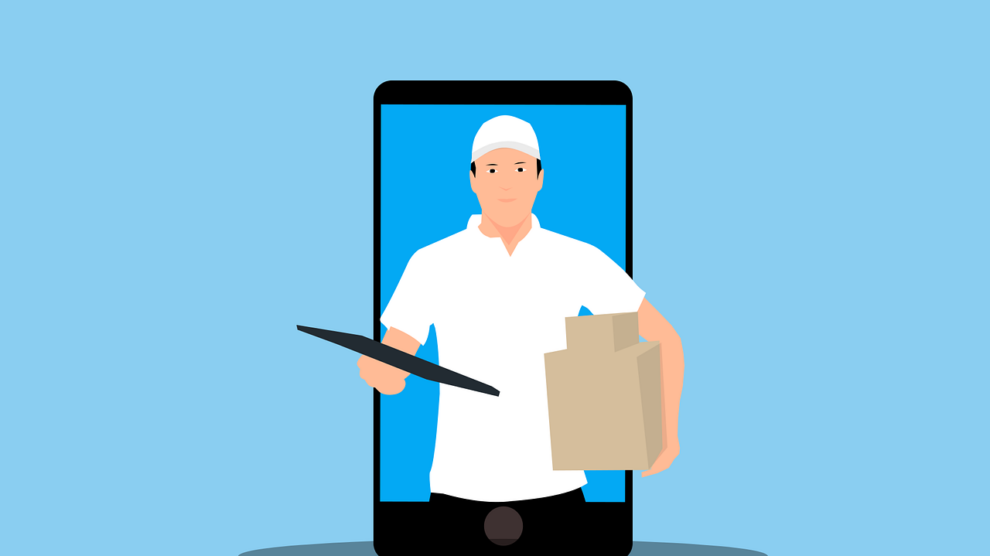E-commerce retailers are shortening their delivery timelines to attract customers. One month after Amazon announced it would offer one-day delivery, Walmart followed suit.
This trend presents small businesses with a big challenge:
How can small businesses satisfy consumer expectations for rapid delivery with neither the technologies nor the economies of scale used by e-commerce giants?
According to Internet Retailer, e-commerce sales represented more than half (51.9%) of all retail sales growth between 2016 and 2018.
As increasingly more people order online, small businesses are struggling to keep up with companies such as Amazon and Walmart.
To avoid losing customers, smaller retailers must find ways to satisfy peoples’ newfound love for fast shipping.
Here are 3 ways small businesses can expedite their delivery schedules to meet the demands of their customers.
1. Communicate Clearly with Customers
Consumers expect quick shipping, but communication can ameliorate the impact of longer-than-expected delivery times.
According to a recent survey, nearly half of respondents typically receive a package within 2 to 3 days and 42% say they receive their packages in 4-7 days.
Use your website and onboarding materials to help customers understand what goes into creating and delivering their orders. Customers may not realize how complicated it can be for a small business to ensure packages end up on customers’ doorsteps in a timely manner.
Explaining your production process will help reduce customers’ concerns about delivery timelines because they will be more understanding of the work involved.
Consumers are generally willing to wait a bit longer for delivery once they understand the process, but not if the package arrives later than the promised date. Don’t promise fast shipping if you can’t deliver.
Finally, small businesses can offer more personalized service than e-commerce giants, so talk consistently with your customers about their shipping expectations.
Perhaps your customers won’t mind waiting another day or two to receive their packages. Alternatively, you can ship items separately to meet any rigid expectations for rapid delivery.
2. Take Advantage of Third-Party Logistics Providers (3PLs)
Businesses should speed up their delivery timelines, even if e-commerce isn’t their focus.
Consider that nearly half (45%) of people will not order from a company again if the delivery is late, according to Clutch’s survey.
In the age of customer experience and social media, meeting shoppers’ shipping demands helps to both retain and attract new business.
Third-party logistics providers (3PLs) can help your business accelerate shipping and provide a more rewarding service experience.
Logistics companies provide small businesses with the same technologies, infrastructure, and analytics used by e-commerce giants.
For example, partnering with a 3PL can potentially help you offer same-day shipping and order updates to customers.
Customers appreciate the swiftness of delivery, the clarity on shipping status, and protections for their packages that outside logistics providers can offer. Meanwhile, you’re free to focus on your marketing and supply chains.
Logistics providers can help you bolster your shipping capabilities without drastically increasing costs.
3. Streamline Product Offerings to Focus on Quick-Ship Products
The need for faster shipping is pushing small businesses to alter their production processes.
Streamlining your product offering can help you fulfill and ship orders more quickly.
“I recently un-listed an entire category of items that took a little longer than average to make and ship, and I’m concentrating on selling things that are ready-to-ship,” said Kara Buntin, owner of A Cake To Remember, a cake decorating supply shop.
Another option is to redesign your products so they’re easier to ship.
Businesses can prepare items ahead of time to allow for quick fulfillment, or simply eliminate less popular products that are impossible to ship quickly.
Finding shipping locations nearer to your customers can also enable faster delivery times.
Similar to how Amazon uses a handful of fulfillment centers, small businesses should consider the benefits of shipping from certain geographic locations to cut costs.
Small Businesses Must Compete on Shipping Timelines
E-commerce giants are rushing packages to shoppers and small businesses have no choice but to try and keep up.
If you can’t match the speed of Amazon, it’s better to tell customers why than to overpromise and under-deliver. Disappointing your customers will incite backlash and ruin the relationship.
Consider using a third-party logistics provider to cut costs and boost delivery speeds. You can also streamline your product offering to make them more shipping-friendly.





